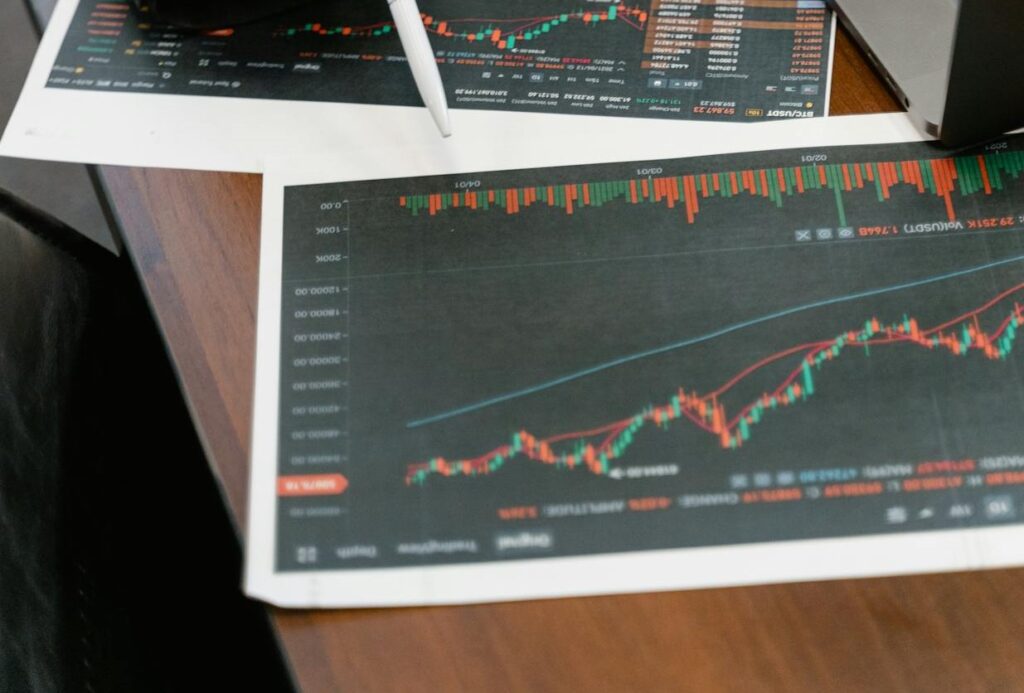Piercing the veil of normalcy, data analytics has been a harbinger of transformation across numerous industries, causing an upheaval in traditional business operations. By leveraging intricate analysis techniques, organizations can plummet into the depths of data and unearth insights that fuel strategic decision-making. A critical cog in this evolutionary wheel is discerning new patterns hidden within these colossal data troves. In this context, digital trend spotting becomes a protagonist.
Digital trend spotting allows us to stray off the well-trodden path of customary data analytics. This avant-garde methodology aids in pinpointing unique trends and progressions woven into the fabric of raw data, thereby crafting a predictive blueprint that offers sneak peeks into forthcoming trends. As a result, businesses are empowered with foresight that keeps them ahead in the game by tactically recalibrating their plans and functions according to shifts in market dynamics. Thusly, unearthing novel patterns through data analytics not only widens our comprehension about prevailing phenomena but also arms us with crucial implements for predictive clairvoyance.
Understanding the Concept of Analytical Pattern Recognition
In the labyrinthine domain of data analytics, analytical pattern recognition stands as a critical component. This avant-garde methodology employs an organized strategy aimed at discerning and elucidating patterns veiled within convoluted datasets. At its core, analytical pattern recognition embarks on a quest to unravel and comprehend the complex correlations, dependencies, and trends that might otherwise remain hidden in an ocean of data.
Now shifting focus towards “What encapsulates trend spotting and analysis?” it can be defined as the pursuit of recognizing nascent patterns amongst vast expanses of information. Upon identifying these patterns, trend analysis plunges deeper into them fostering profound comprehension which aids effective decision-making processes. The flawless amalgamation of analytical pattern recognition with trend spotting and analysis bestows businesses with the power to envisage – even sculpt future market landscapes with amplified assurance and precision.
Role of Advanced Analytics in Emerging Market Trends

Advanced analytics, with its complex yet effective approaches and algorithms, has ensnared a critical role in the deciphering of data for surfacing market trends. It delves into the ocean of big data, unravels noteworthy correlations and extrapolates future tendencies based on discerned patterns. Utilizing this tool allows organizations to decode intricate market designs, comprehend customer conduct, streamline business processes and predict market trends – all contributing to the mounting prevalence of advanced analytics across nearly every industry.
The question arises: how does one dissect data to pinpoint patterns and trends? There isn’t a uniform answer that fits all scenarios but it usually kickstarts with gathering relevant data. Following this step is where raw data undergoes processing and cleansing to expunge any inconsistencies, redundancies or anomalies lurking within it. Advanced analytics then steps onto the stage; examining the purified data to expose correlations, patterns and trends that may initially be inconspicuous. To put simply: advanced analytics morphs rudimentary data into invaluable insights which empower organizations to make informed decisions rooted in hard facts – facilitating them in crafting effective strategic plans as well as maintaining an edge in our swiftly evolving marketplace scenario.
Techniques for Spotting Developments in Data Analysis
To unearth the latest breakthroughs in data analysis, one must delve deep into distinct methodologies that are capable of effectively scrutinizing and discerning vast quantities of data. The question “How does one analyze trend data?” is frequently asked by professionals yearning to metamorphose raw, unprocessed information into valuable insights. Robust techniques and tools including time-series analysis, pattern recognition, regression analysis, and moving averages can be successfully utilized to reveal hidden trends within large datasets.
These methods serve as a distillation apparatus for intricate information, converting it into digestible formats which empower analysts to make educated decisions based on the revealed insights.
Predictive modelling stands as yet another invaluable technique for tracking progressions in data analysis. This approach harnesses historical data allowing analysts to architect models capable of prognosticating future trends. Equipped with these predictive models, analysts gain enhanced abilities in interpreting fluctuations and variations within the dataset — an ability instrumental in uncovering potential trends before they become glaringly apparent.
Thusly these techniques not only illustrate current scenarios but also offer insight into possible future occurrences by reliably predicting imminent trends within the sphere of data.
Utilizing Big Data to Discover Future Trends
In the labyrinth of trend identification, significance is extracted from the intricate strata of data that inundate our contemporary reality. Big Data, an idea alluding to the colossal amounts of structured and unstructured data produced at an ever-increasing pace, harnesses computational might to decipher these layers, unravelling patterns and trends that could otherwise stay concealed. These sequences can be prescient, offering precious perceptions for predicting future tendencies, enriching tactical planning and igniting innovative undertakings. This represents the potency of Big Data in the burgeoning landscape of trend detection.
Sophisticated analytics assume a pivotal position in recognising patterns within this vast expanse known as Big Data. Techniques such as data excavation, machine comprehension and prognostic modelling are utilised to uncover, assess and comprehend these emerging patterns. Scalability is another salient feature accompanying Big Data analytics; it sanctions not only a broader examination scope but also a more heterogeneous one. This metamorphoses into a multifaceted understanding of trends which aids in forecasting forthcoming developments with a heightened level of certainty and assurance.
The Impact of Machine Learning on Trend Analysis
In the modern tableau of data interpretation, machine learning exudes an air of perplexity as it signals a transformative shift. Its prominence is particularly conspicuous in trend analysis due to its burgeoning sophistication and accessibility. The capacity of machine learning to glean insights from historical data, interpreting patterns that might elude human perception, infuses an added layer of complexity into various modes of trend identification, thereby amplifying efficiency and depth.
Armed with intricate algorithms from machine learning’s repertoire, handling colossal amounts of data within mere seconds has become feasible. This allows for the detection of key indicators, concealed patterns and potential trends which are otherwise invisible. The incorporation of machine learning not only bolsters prediction accuracy but also enables organizations to react nimbly to market fluctuations.
Henceforth on a wider scale encompassing trend analysis, there is no denying the enigmatic yet indispensable role played by machine learning in steering businesses towards making informed decisions based on empirical evidence.
The Connection Between Data Visualization and Trend Identification
Venturing through the boundless terrain of accessible data proves to be an intricate enigma for a multitude of analysts. Often, detected patterns are shrouded within labyrinthine and abstruse configurations, lying in wait to be unearthed. Herein resides the pivotal nexus between data visualization and trend discernment. Data visualization serves as a potent instrument, transmuting raw, unstructured information into coherent, digestible visual depictions. Patterns that remain concealed within text-centric datasets burst forth when graphically portrayed.
Cutting-edge data visualization techniques do more than merely cast light on obscured trends; they also lend support to impactful decision-making procedures. By distilling colossal volumes of data into simplified visuals, these methodologies aid comprehension and pattern spotting – making it possible for individuals with diverse backgrounds to grasp analytical findings comprehensively.
By streamlining complex information into an approachable format, data visualization clarifies the overall picture while throwing a spotlight on nascent trends—thereby amplifying both efficiency and precision in trend detection and forecasting processes—an indispensable asset in the fast-paced sphere of data analytics where perplexity rules supreme but is handled deftly via bursts of insights from well-visualized data.
FAQ
The discovery of new patterns in data analytics is pivotal, as it paves the way for companies to make decisions rooted in facts. This practice assists in predicting marketplace tendencies, grasping customer conduct, optimizing procedures, and propelling growth.
Analytical pattern recognition embodies the activity of discerning and interpreting trends and structures within data. It deploys statistical, mathematical methods alongside machine learning algorithms to scrutinize substantial data sets and draw predictive or explanatory conclusions.
Advanced analytics holds a fundamental role when it comes to pinpointing evolving market tendencies. It facilitates delving deep into data to extract valuable insights and anticipate future inclinations. Companies can subsequently utilize these insights to synchronize their strategies with prevailing market trends.
Methodologies favored for identifying advancements in data analysis encompass practices such as data mining, predictive modeling, machine learning techniques along with statistical scrutiny. These methods assist businesses by deriving significant understanding from raw information while forecasting forthcoming movements.
The employment of big-data offers potential for unveiling impending trends through real-time analysis of extensive volumes of information.This capability enables organizations identify recurrent themes so as predict future trajectories thus enhancing proactive decision-making processes.
Machine-learning has drastically transformed trend-analysis by automating intricate tasks associated with analysing copious amounts 0f information.It’s ability learn from this vast pool helps decipher recurring motifs thus making precise forecasts – leading towards more effective trend analyses .
Visualization of data serves as potent tool in identifying trends. By presenting data graphically or pictorially, it simplifies comprehension of complex datasets and makes spotting patterns a less daunting task. Leveraging visualized information, businesses can swiftly dissect large volumes of information leading to more informed decision-making.

